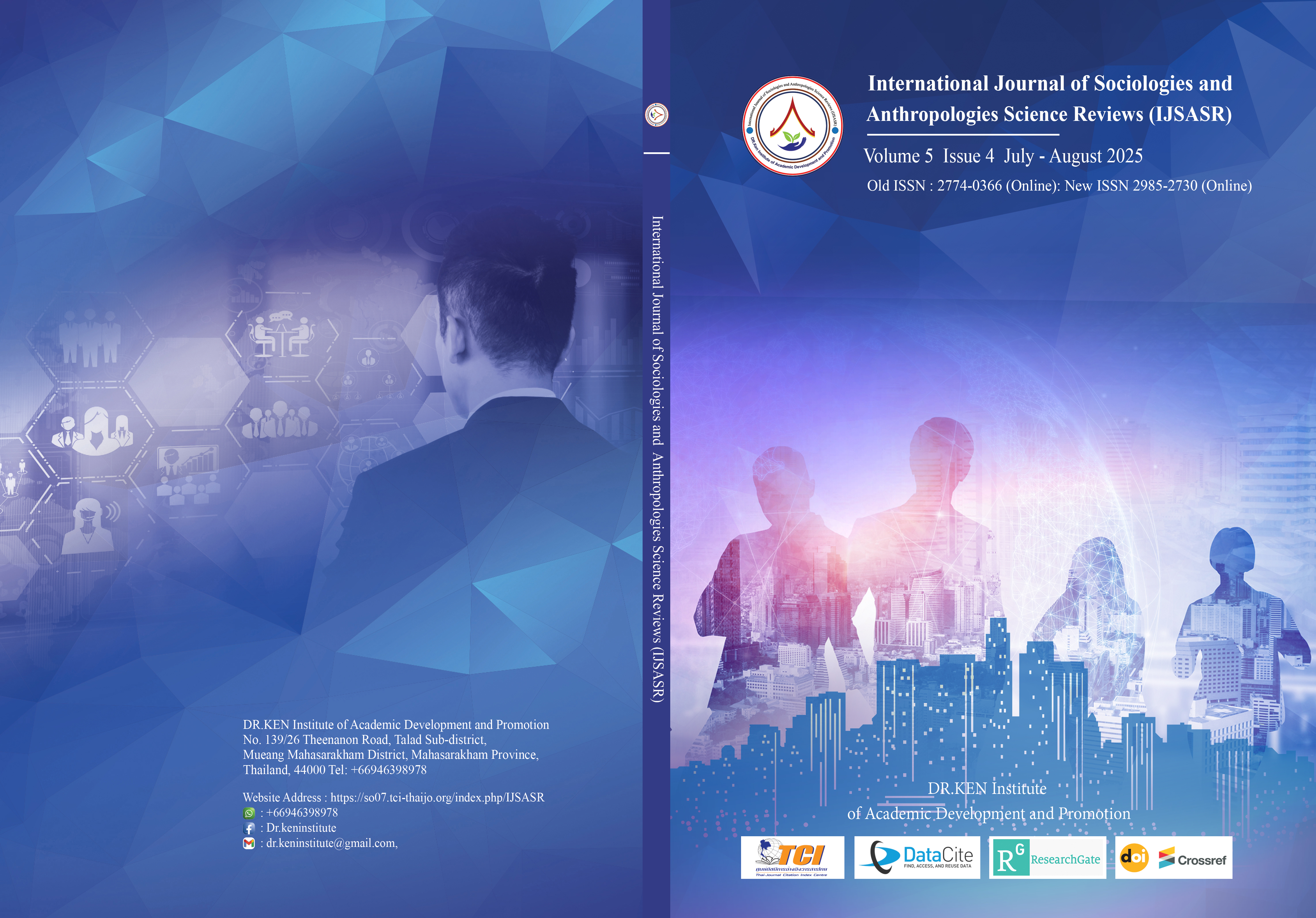The Architectural Space Art Characteristics of Foshan Academies
Main Article Content
Abstract
Background and Aim: Foshan academies in China are carriers of historical culture, reflecting the academic and cultural development of the region. This study investigates the architectural space of traditional Foshan academies from a design perspective. The research aims to classify and analyze existing resources and types, explore the artistic characteristics of architectural space, and uncover the cultural core and spirit of Foshan academies to provide a scientific basis for their modern inheritance.
Materials and Methods: Field research was conducted on 27 academies selected for their integrity and representativeness. Descriptive statistics and content analysis were used, integrating interdisciplinary methods from design, folklore, architecture, and cultural geography.
Results: The distribution and site selection of Foshan academies are influenced by political, economic, and cultural factors such as Confucianism, Buddhism, and Taoism. The architectural layout centers on atria, with lecture halls, libraries, and sacrificial spaces arranged in a strict axisymmetric sequence, reflecting a cultural concept of step-by-step progression. The academies exhibit a distinct Lingnan architectural style with decorative art featuring three carvings, two sculptures, and one painting, blending local cultural aesthetics and practical climate adaptations. The cultural core of the academies represents a unique blend of Confucian rites and music, a commitment to upholding the Tao, and the integration of Chinese and Western influences.
Conclusion: The artistic characteristics of Foshan academies showcase a blend of Central Plains, Lingnan, and overseas cultures. The research highlights the need for deeper exploration of the evolution, artistic features, and cultural connotations to support the modern inheritance and development of academic culture.
Article Details

This work is licensed under a Creative Commons Attribution-NonCommercial-NoDerivatives 4.0 International License.
Copyright on any article in the International Journal of Sociologies and Anthropologies Science Reviews is retained by the author(s) under the under the Creative Commons Attribution-NonCommercial-NoDerivatives 4.0 International License. Permission to use text, content, images, etc. of publication. Any user to read, download, copy, distribute, print, search, or link to the full texts of articles, crawl them for indexing, pass them as data to software, or use them for any other lawful purpose. But do not use it for commercial use or with the intent to benefit any business.

References
Chen, D., & Cheng, J. (2022). The tacit understanding between decoration and space: A study on the beam frame style and decoration of Renwei Temple in Guangzhou. Traditional Architecture and Gardens Technology, 6, 20–23.
Gregson, N., Metcalfe, A., & Crewe, L. (2009). Practices of object maintenance and repair: How consumers attend to consumer objects within the home. Journal of Consumer Culture, 9(2), 248–272. https://doi.org/10.1177/1469540509341481
ICOMOS. (2008). Québec Declaration. In 16th General Assembly and International Scientific Symposium.
Liu, B. (1939). The evolution of the Guangdong academy system. Changsha: The Commercial Press.
Liu, M. (2013). An exploration of the cultural and artistic characteristics of ceramic ridge ornaments of Lingnan architecture. China Ceramics, 49(8), 77–81.
Lowenthal, D. (2015). The past is a foreign country—revisited. Cambridge University Press.
Tian, T. (2017). A discussion on Tianjin city academies in the late Qing dynasty. Urban History Research, 2017(1), 167–183.
UNESCO. (2003). Convention for the safeguarding of the intangible cultural heritage. The China Intangible Cultural Heritage Network. Retrieved from https://www.ihchina.cn/zhengce_details/11667
Wang, F. (2011). The rise of Lingnan academies and the characteristics of Chinese academy education. Journal of Guangzhou Institute of Socialism, 4, 64-70.
Zhong, L. (2022). A study on Foshan academies from the perspective of time and space. Anhui Architecture, 29(6), 33, 87.






